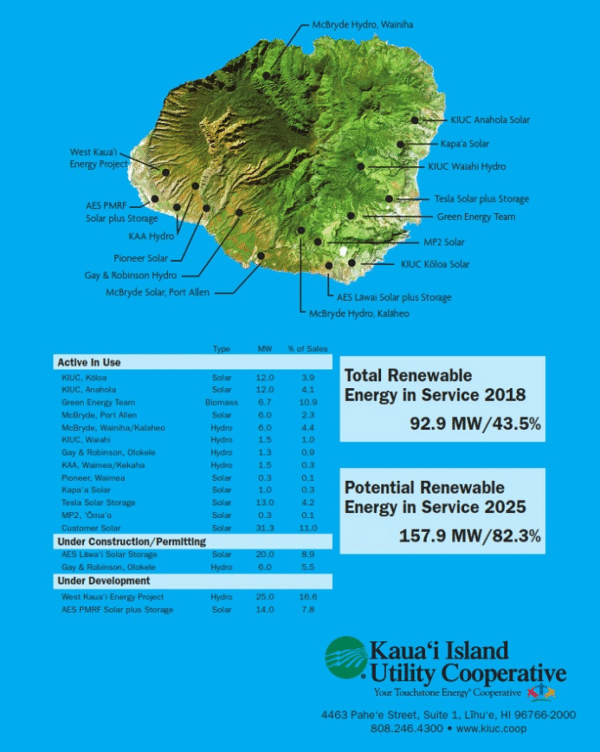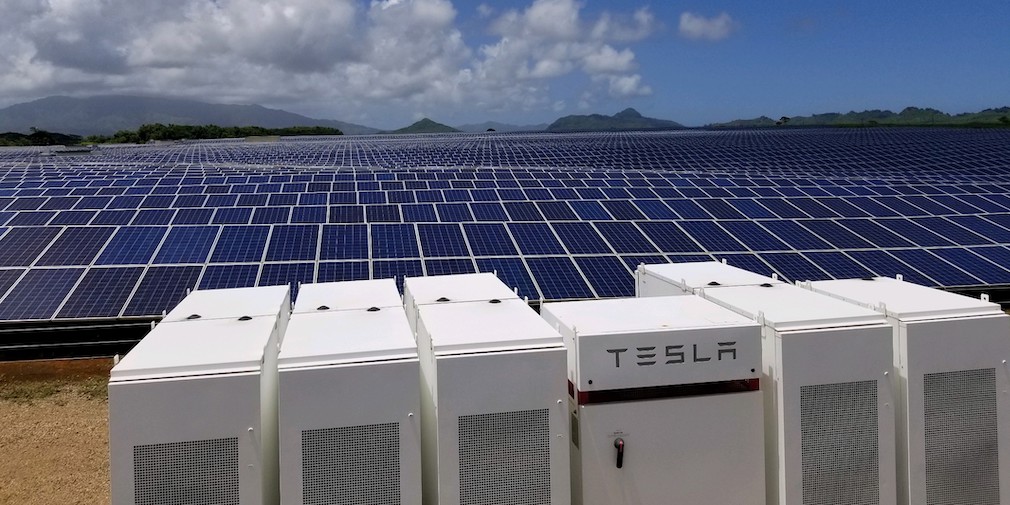It really was the perfect storm. On Sunday a cable failure took the largest power plant on the island of Kaua’i in Hawaii offline, which led to cascading failures in other oil-fired and hydro power plants, leading to a 2+ hour blackout for the island’s 72,000 residents.
And then the storm came, with clouds limiting the output of the solar arrays that provide 35% of the annual power to the island, including two large solar + storage plants. The result was that the island’s utility was forced to implement rolling blackouts around midnight on Sunday night, and in waves throughout the day on Monday.
But by late Monday afternoon, it was over. Despite work on the Port Allen oil-fired power plant continuing and still waiting on parts to repair the Kapaia oil-fired power plant which started it all, the Kaua’i Island Utility Cooperative (KIUC) did not have to implement further rolling blackouts on Tuesday.
This was in part due to the contributions of solar. KIUC stated that the batteries at the 13 MW Tesla plant and the 20 MW AES Lawa’i plant fully charged during the day on Tuesday and were able to supply power overnight. The same appeared to be true yesterday, despite the arrival of more clouds. According to a KIUC statement from last night:
Both the AES Lawai and Tesla facilities were able to charge their battery systems to 100 percent today for use this evening and into the morning. We do not anticipate having to implement rolling blackouts this evening.
Island problems
While it is easy to cast the rolling blackouts on Monday as a weakness of the variable nature of solar – even when paired with battery storage – there is another key factor which is often forgotten. Kaua’i is more than 100 miles from other islands in the Hawaiian chain, and holds no electrical interconnection. This means that unlike the places where the overwhelming majority of Americans live, it cannot bring in power from outside.
Additionally, the solar resources on Kaua’i are concentrated in the 562 square miles of the island. Multiple studies have shown that in order to maintain relatively steady output on a day-to-day basis from solar, it is necessary to deploy solar plants across sufficiently large geographic areas that their output is not impaired by local weather.
 In short, it isn’t usually cloudy (or sunny) everywhere. Except if you are on an island.
In short, it isn’t usually cloudy (or sunny) everywhere. Except if you are on an island.
But Kaua’i is an island, and this is a significant technical challenge as it moves towards 100% renewable energy per the state’s 2045 mandate. Further compounding this challenge is that Kaua’i has no wind turbines to balance out its solar generation on an hourly and seasonal basis, and must instead rely on its hydroelectric power.
With the AES Lawa’i solar plus storage plant online, Kaua’i is already getting more than half of its power from solar, hydro and one biomass plant on the island, and by the time more solar and hydro plants come online in 2025, it expects to get 82% of its power from renewables.
And as it does, we will continue to cover Kaua’i’s remarkable progress, and its unique challenges.
This content is protected by copyright and may not be reused. If you want to cooperate with us and would like to reuse some of our content, please contact: editors@pv-magazine.com.









This truly is the proof of concept people need to assure themselves that fueled generation is not needed, when proper design and execution of non-fueled generation resources will do the job with proper distribution and energy storage facilities along the grid. With 72,000 customers, if they all had solar PV and a home energy storage system, would this have been a problem at all?
I don’t think it would be practical to run an island like Kaua’i solely on rooftop solar, for one main reason: due to the limited size of the island, when it is cloudy in one part, it is cloudy in all of them.
Larger geographies are a different story.